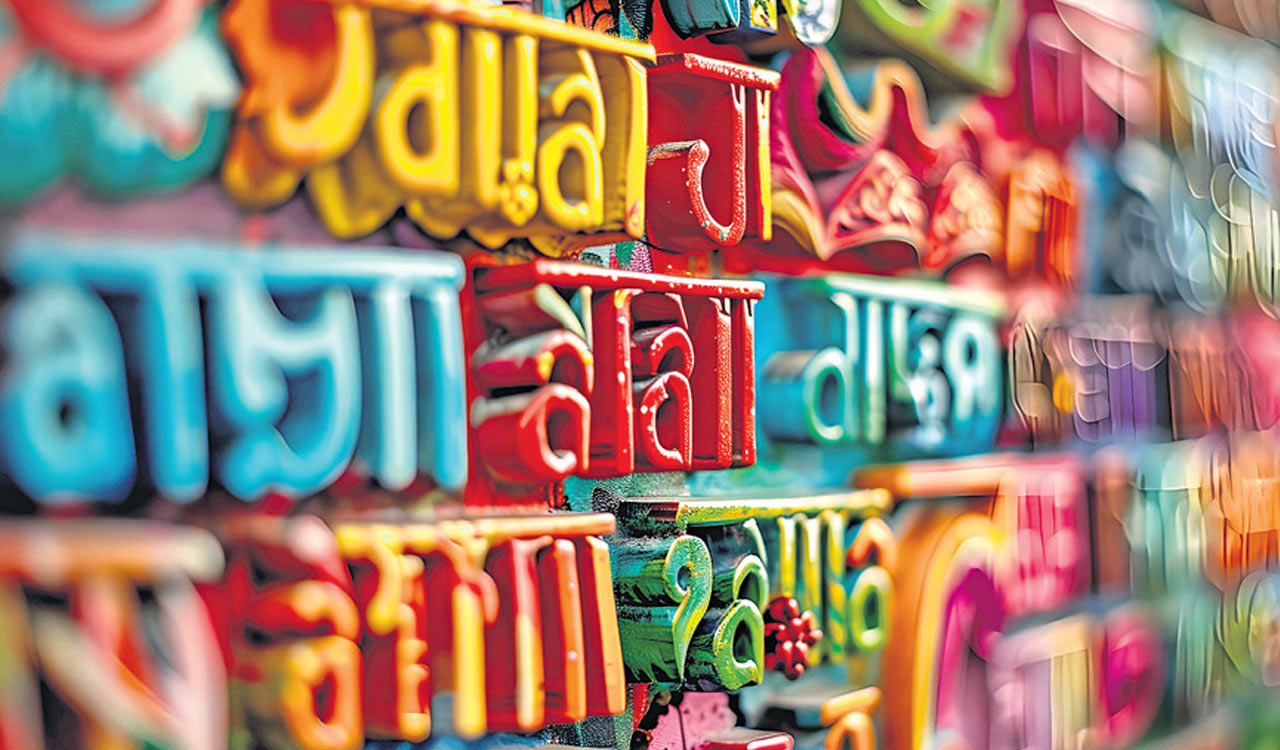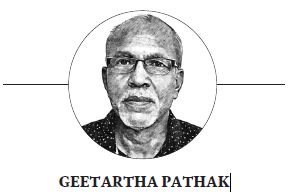Opinion: Save Indigenous languages
Instead of recognising a handful of mainstream languages, govt must turn attention to disappearing language

By Geetartha Pathak
On October 3, the Centre approved five new classical languages: Marathi, Pali, Prakrit, Assamese and Bengali. This increased the total number of recognised classical languages in India to 11, which includes Tamil, Sanskrit, Telugu, Kannada, Malayalam and Odia. Some critics said political motivations could be behind such a move.
The Shiv Sena-BJP-led government in Maharashtra formed a “persuasion” committee, led by former diplomat Dnyaneshwar Muley, a few months ago to get Marathi recognised as a classical language. The demand was raised many times by MPs from Maharashtra in Parliament, and the Centre gave assurances at least three times in the last 10 years that Marathi was being considered for according classical status.
Odia was declared a classical language in 2014 after much political persuasion. Interestingly, Odia, which is viewed by many as a dialect of Bengali, got recognition as a classical language ten years before Bengali was recognised as a classical language. The Assembly elections in Maharashtra is next month and the timing of recognising Marathi as a classical language indicates the political angle to it. The inclusion of Bengali and Assamese too may have some link with the nearing of Assembly elections in these two States.
Dropping Key Provision
The Union Cabinet’s decision to accord classical language status to these five languages came after a key provision, which mandated that a language must have an original literary tradition, was dropped. The Linguistic Expert Committee discussed and understood that it was very difficult to prove or disprove (original literary tradition) as all ancient languages borrowed from each other.
The initial criteria evolved by the government to determine the declaration of a language as classical are: it should have high antiquity of its early texts, recorded history of over 1,500-2,000 years, a body of ancient literature or texts that is considered a valuable heritage by generations of speakers, the literary tradition should be original and not borrowed from another speech community. Another criterion is that the said language and literature should be distinct from its modern format; there may also be a discontinuity between the classical language and its later forms or its offshoots.
Once notified, the Education Ministry provides certain benefits to promote the language, which include two major annual international awards for scholars of eminence in the said languages. Apart from this, a centre of excellence for studies in the classical language is set up, and the University Grants Commission is requested to create a certain number of Professional Chairs in central universities for the languages that get the classical tag. These measures may help to some extent but to ensure the survival and growth of such languages much more efforts are needed. Moreover, all the 11 recognised classical languages are dominating languages in their respective States. The languages of the indigenous and tribal people need more attention as many such languages are vanishing fast.
Endangered Language
The UNESCO recorded that 2,469 languages are at risk of extinction. With globalisation, major languages like English are pushing the languages with few speakers to the deathbed. Migration, cultural fusion and absence of written script are some of the reasons for the disappearance of languages. One of the examples of endangered language is Irish, which is also known as Gaeilge. It is an official language of the Republic of Ireland but is endangered due to historical factors and language shifts. Half of the languages that exist today worldwide will disappear over the next century. In Latin America and the Caribbean, one in every five indigenous people has already lost their native tongue — 44% now speak Spanish and 55% Portuguese.
There are 7,000 documented languages currently spoken across the world, but half of them could be endangered, according to a new study. It is predicted that 1,500 known languages may no longer be spoken by the end of this century. Researchers from The Australian National University analysed thousands of languages to identify factors that put endangered ones at risk. The findings highlight a link between higher levels of schooling and language loss, as regionally dominant languages taught in class often overshadow indigenous languages.
The link between the endangering of language and more roads or climate change may sound like an absurd likelihood, however, it is real. “We found that the more roads there are, connecting country to city, and villages to towns, the higher the risk of languages being endangered. It is as if roads are helping dominant languages ‘steamroll’ over other smaller languages,” said Professor Lindell Bromham, co-author of the above-mentioned study. Climate changes oblige the communities to relocate, creating climate change refugees. The catastrophes caused 23.7 million internal displacements in 2021, most of which were due to meteorological consequences.
With the material development, indigenous people are losing their land which is often appropriated by corporations vying to get a hold of natural resources. When biodiversity disappears, they lose access to their only source of livelihood. They are then forced to migrate to other rural or urban areas. When these communities split up, their languages begin to face a slow death. The split communities are often compelled to communicate with the dominant language of their new homes and over generations, the traditional tongues become extinct.
Preserving Them
With each indigenous language that disappears, thinking, culture, tradition and the knowledge it encompasses is lost. Allowing a language to disappear is like burning books or bombing museums in wartime. An important part of humanity, its history and way of understanding the world disappear forever when this happens. Many of the languages predicted to be lost in future still have many speakers. Therefore, investing in supporting these Indigenous communities to revitalise their languages may alter the trend of vanishing languages.
The Rosetta Project, a global collaboration of language specialists and native speakers is working to build a digital library of human languages. The project draws attention to the accelerated loss of the world’s languages and could help preserve many endangered and “sleeping” languages for future generations.
The UNESCO International Decade of Indigenous Languages, from 2022 to 2032, aims to engage the global community with the critical issue of language loss. The initiative continues the work of the UN’s 2019 International Year of Indigenous Languages. As part of its plan, it is creating a network of international stakeholders focused on protecting the rights of Indigenous people to revitalise and preserve their languages. Cornish, a dead language spoken in a part of England, was revived with the help of the internet. People found each other online and communities around Cornish were formed. The language has even found its way back into schools. SGaawaay K’uuna, the first feature-length film made completely in Haida, a Canadian indigenous language, encouraged film production in endangered languages. In 2018, it was honoured as the best Canadian film by the Vancouver International Film Festival and Vancouver Film Critics Circle.
The government of India should pay more attention to the dwindling Indigenous languages than according recognition to a handful of mainstream languages that too with political motivation and chalk out a project in line with the UNESCO and Rosetta Project, which may save many local communities’ languages from extinction and our rich diverse human heritage.

(The author is a senior journalist from Assam)
Related News
-
21 dead as Mozambique erupts in violence after election court ruling
10 mins ago -
Cartoon Today on December 25, 2024
8 hours ago -
Sandhya Theatre stampede case: Allu Arjun questioned for 3 hours by Chikkadpallly police
8 hours ago -
Telangana: TRSMA pitches for 15% school fee hike and Right to Fee Collection Act
8 hours ago -
Former Home Secretary Ajay Kumar Bhalla appointed Manipur Governor, Kerala Governor shifted to Bihar
9 hours ago -
Hyderabad: Organs of 74-year-old man donated as part of Jeevandan
9 hours ago -
Opinion: The China factor in India-Nepal relations
9 hours ago -
Editorial: Modi’s Kuwait outreach
9 hours ago




